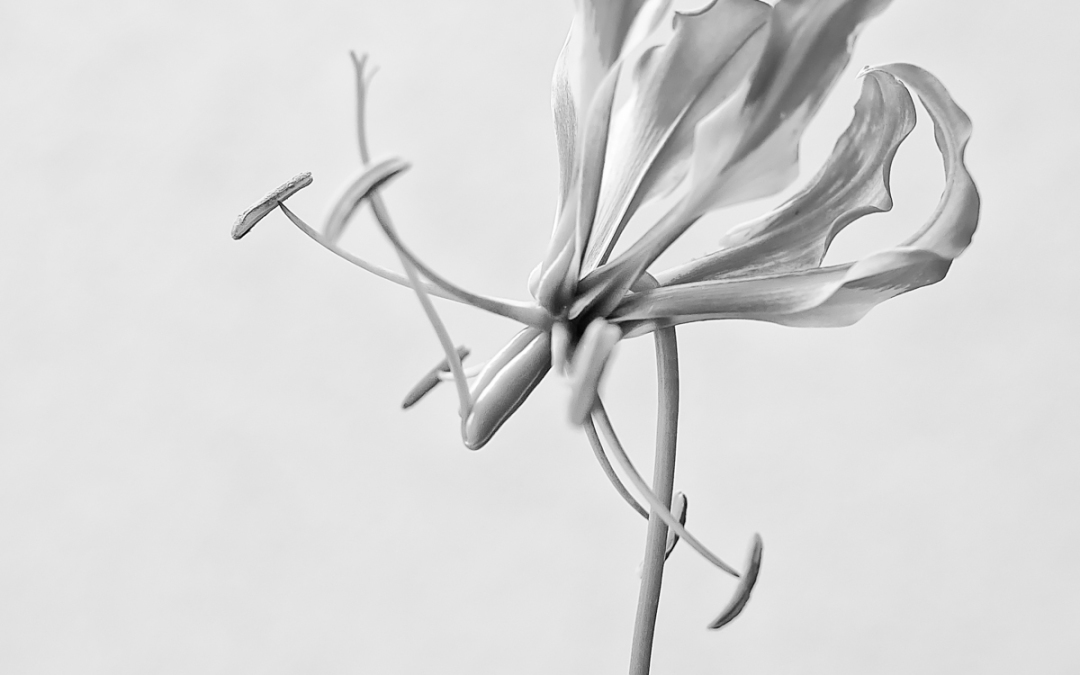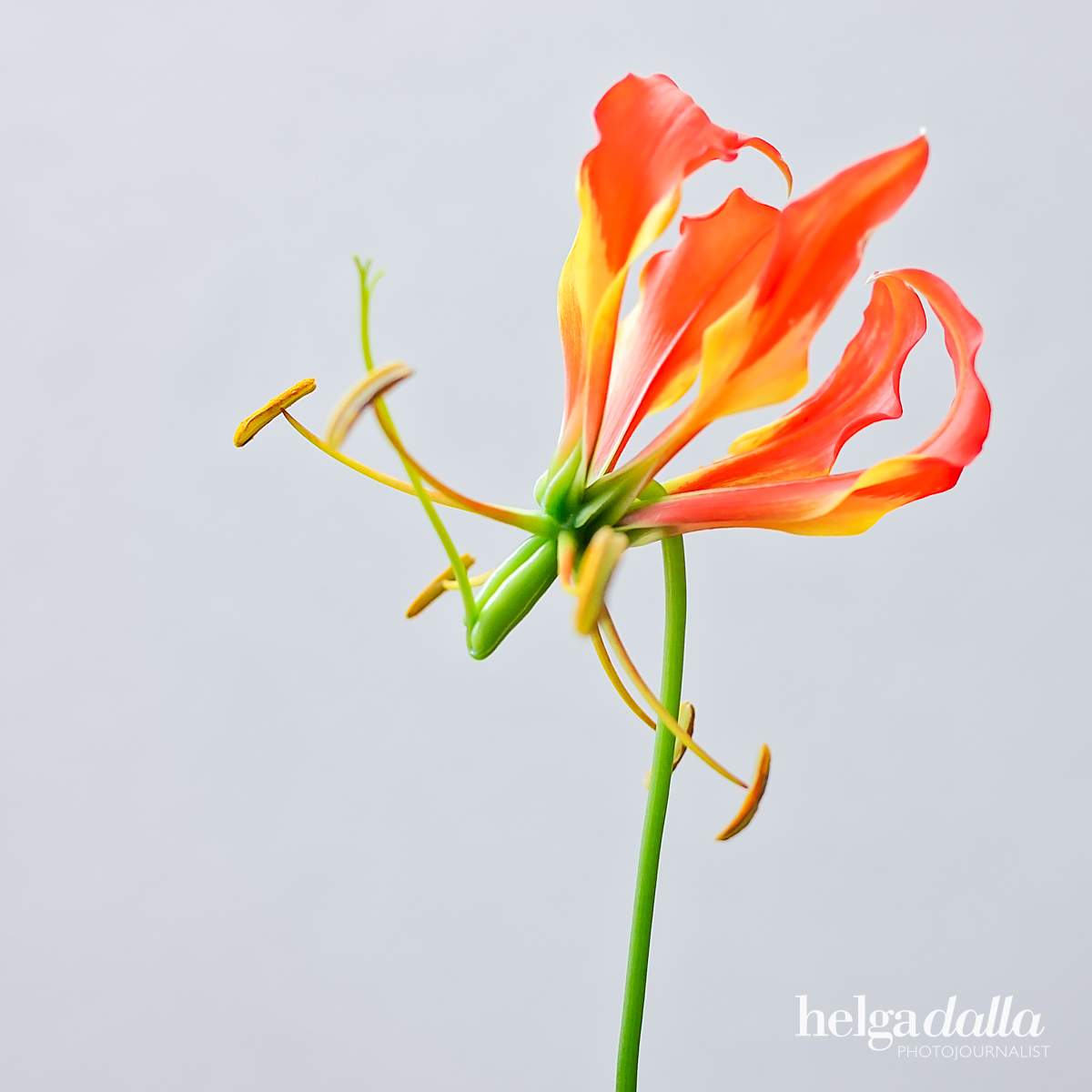“Flame Lily”
Day 77 of 366 Day Project
“Magic is everywhere, explore & be amazed everyday!”
I spotted this little gem out exploring today along the path in amongst sand dunes. Some research with Mr Google found that it’s scientific name is Gloriosa superba, however more commonly known for climbing lily, creeping lily, fire lily, flame lily, gloriosa, gloriosa lily, glory lily and Rhodesian flame lily.
A native of Africa and Asia, flame lilies are grown commercially for a chemical compound, colchicine. In parts of India, they are considered threatened due to over-harvesting by the pharmaceutical trade.
Flame lily is a perennial herb with climbing stems up to 4 m long. Leaves are shiny, green and hairless with 10–20 mm long tendrils at the tips, which curl around supporting plants. Flowers are 45–70 mm wide, yellow, orange and red, borne singly on spreading stalks which arise in leaf forks. Flowers appear to be upside down with the petals pointing upwards, while 40–70 mm long stamens point downwards. Flowers grow from October–May. The seedpod is shaped like a rugby ball 40–100 mm long and 10–20 mm wide. Seeds are initially orange to red before drying to 4–5 mm diameter brown balls. Top growth dies off in winter before re-shooting in the spring.
A national treasure… as the national flower of Zimbabwe, the flame lily is a protected plant within the country. Queen Elizabeth II was presented with a flame lily diamond brooch as a gift from Zimbabwe (Southern Rhodesia as it was then) when she visited as crown princess in 1947
Protection… the flame lily is cultivated for its beautiful flowers but not in Zimbabwe – because it’s the country’s national flower it’s protected under the Parks and Wildlife Act from illegal harvesting.




Recent Comments